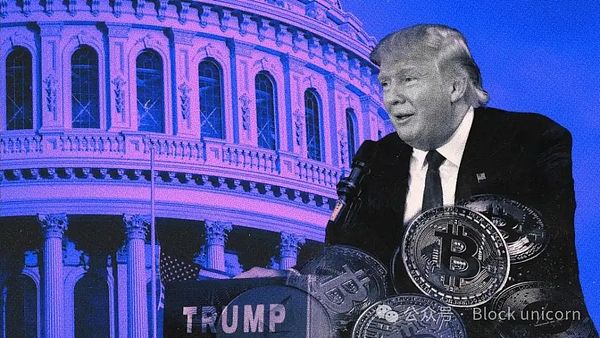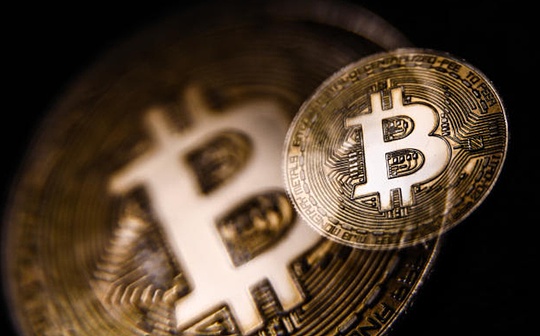How Bit Bonds Reshape the U.S. Fiscal and Global Economic Landscape

Reprinted from jinse
04/15/2025·9DArticle author: Grok, Block unicorn

In today's global economic system, as the center of the world economy, the United States' fiscal policy not only affects the domestic market, but also deeply affects the international financial landscape. In recent years, with the rise of cryptocurrencies such as Bitcoin, the traditional financial system is facing unprecedented challenges and opportunities. A new financial instrument called "BitBonds" was proposed to solve the long-standing debt problems in the United States by combining the characteristics of Bitcoin and U.S. Treasury bonds, while providing a feasible path for the "budget-neutral Bitcoin reserve strategy" proposed by the Trump administration. This article will conduct in-depth discussions on the origin, operating mechanism, economic impact and future prospects of BitBonds, and try to speculate on the long-term impact of this innovative tool.
The Origin of BitBonds
The concept of BitBonds was the earliest Matthew Pines believed that BitBonds could not only help the US government hold Bitcoin, but also relieve debt pressure by lowering Treasury bond interest rates.
Potential benefits to U.S. finance
One of BitBonds’ core goals is to alleviate the growing debt crisis in the United States. Interest expenses on traditional government bonds have accounted for a large part of the federal budget, and this burden is still increasing as interest rates rise. By introducing BitBonds, the Treasury can transfer some of the debt costs to the value-added potential of Bitcoin. If the price of Bitcoin continues to rise, the government will not only reduce its net interest expenses, but may also obtain additional revenue by selling reserve Bitcoin, thereby achieving a "soft landing" of debt problems.
In addition, the issuance of BitBonds may reduce the yield demand for traditional Treasury bonds. Due to its bitcoin-pegged nature, such bonds are more attractive to investors and the Treasury may be able to raise funds at lower interest rates. This is undoubtedly a shot in the heart for the United States, which has long relied on debt-driven economy.
Promotion to the Bitcoin market
The implementation of BitBonds will significantly improve the legitimacy and market demand of Bitcoin. As the world's largest single economy, the US government's formal intervention in the Bitcoin market will give an unprecedented endorsement effect to this cryptocurrency. Market analysts predict that if the United States successfully accumulates thousands or even tens of thousands of Bitcoins, its price may rise sharply in the short term, attracting more institutional investors to enter.
However, this may also exacerbate the volatility of the Bitcoin market. As a bulk holder, the government's trading behavior may trigger market panic or speculation craze. In addition, if other countries follow the example of the United States to launch similar tools, Bitcoin’s supply and demand balance will be further broken and the price trend may become more difficult to predict.
Reshaping the global financial landscape
The success of BitBonds may prompt other countries to reexamine their own monetary policy and cryptocurrency relationship. For example, the European Central Bank or the Chinese central bank may launch its own "crypto bonds" to deal with the potential threat of dollar hegemony. This competition may accelerate the diversification of the global financial system and weaken the US dollar's position as the sole reserve currency.
Meanwhile, BitBonds may raise greater international attention to U.S. debt issues. If this tool fails to effectively reduce the debt burden and instead causes fiscal losses due to the decline in Bitcoin prices, the US dollar's credibility may be further hit. This will provide room for growth for alternative assets such as gold and RMB.
Controversy at the social level
The implementation of BitBonds is not without controversy. Critics believe that pegging the national fiscal to extremely volatile Bitcoin is tantamount to a big bet, which may trigger systemic risks when the market collapses. Furthermore, this policy may exacerbate wealth inequality—wealthy investors are more likely to buy BitBonds and make a profit from it, while ordinary people have difficulty sharing their dividends.
Supporters retorted that Bitcoin’s long-term trend is upward and that BitBonds is designed to be flexible enough to avoid risks by adjusting the peg ratio or setting a stop loss mechanism. They also pointed out that this tool will provide young Americans with more opportunities to access cryptocurrencies, thereby promoting the popularity of financial education.
Realistic feasibility analysis of BitBonds
Although BitBonds is theoretically attractive, its actual implementation still faces multiple challenges. First, the legal framework needs to be greatly adjusted. The U.S. Treasury Department’s issuance of cryptocurrency-pegged bonds may require Congressional approval, and differences between the two parties on cryptocurrency policy may delay the process. Secondly, the liquidity of the Bitcoin market is limited, and if the government buys it on a large scale, it may push up prices and cause market chaos.
There are also obstacles at the technical level. Secure storage of Bitcoin reserves requires advanced blockchain technology support, and government agencies have a record of not perfect in cybersecurity. Once the reserves are hacked, the consequences will be unimaginable. In addition, the international community may be skeptical of the US move, believing that it is a disguised economic bullying.
However, optimists point out that the Trump administration has shown a strong willingness to promote cryptocurrency policy after taking office in early 2025. If BitBonds is the first to test it on a small scale as a pilot project, its success stories may quickly win market confidence and pave the way for comprehensive promotion.
Reasonable speculation on future prospects
Assuming that BitBonds is officially launched in the second half of 2025, we can reasonably infer several possibilities for its future development:
Success Scenario: Debt Easing and Bitcoin Hot
In the most optimistic situation, BitBonds received a warm response from the market, and the price of Bitcoin exceeded US$200,000 per coin driven by government purchases. The United States successfully accumulated hundreds of thousands of Bitcoin reserves, which not only reduced interest expenses on Treasury bonds, but also repaid part of its debts by selling some of its reserves. By 2030, BitBonds will become a benchmark for global financial markets, and other countries will follow suit and cryptocurrencies will be fully integrated into the mainstream financial system.
In this scenario, the United States may reconstruct its economic hegemony, but the global monetary system will be more fragmented. Bitcoin may replace the hedging function of some gold and become " digital gold" . Although the status of the US dollar has been weakened, it still maintains competitiveness with the innovation of BitBonds.
Neutral scenario: Limited impact and policy adjustments
The more realistic possibility is that BitBonds has achieved some success in the early stages, but its effect is limited due to excessive fluctuations in Bitcoin prices. The government may adjust its strategy in 2027, such as reducing the bond-bitcoin peg ratio, or introducing other crypto assets, such as Ethereum, to diversify risks. By 2030, although the U.S. debt problem has not been completely resolved, it has gained some breathing space through BitBonds.
Under this circumstance, the Bitcoin market will return to stability after experiencing a boom, and the global financial landscape will not change much. BitBonds could become a niche financial instrument that attracts only specific groups of investors, rather than revolutionizing economic rules.
Failure scenario: fiscal crisis and collapse of trust
In the most pessimistic scenario, BitBonds failed due to the price plunge in Bitcoin. Assuming that the cryptocurrency market enters a bear market in 2026, the value of US reserve Bitcoin shrinks significantly, BitBonds investors suffer losses, and the Treasury Department has to use additional funds to fill the hole. This will exacerbate the debt crisis and shake the US dollar's international credibility.
Under this circumstance, the world may set off a wave of de-dollarization, and currencies such as the RMB and the euro may take the opportunity to rise. The legitimacy of Bitcoin will also be questioned, and regulators may impose tougher restrictions on it, leading to a prolonged downturn in the cryptocurrency market.
Conclusion
BitBonds, a bold financial experiment, embodies the United States' innovative attempts in the face of the debt crisis and the cryptocurrency wave. Its success depends not only on Bitcoin’s market performance, but also closely related to the government’s execution, the international community’s response and technical guarantees. Regardless of the result, this tool will leave a strong mark in the history of finance.
Finally, BitBonds may become a bridge connecting traditional finance and digital economy, pushing the global economy to move towards a more diversified and decentralized direction. However, this road is destined to be full of unknowns and challenges. Perhaps in 2035, when we look back on this period, we will find that BitBonds not only changed the fiscal trajectory of the United States, but also reshaped our perception of currency and value.



